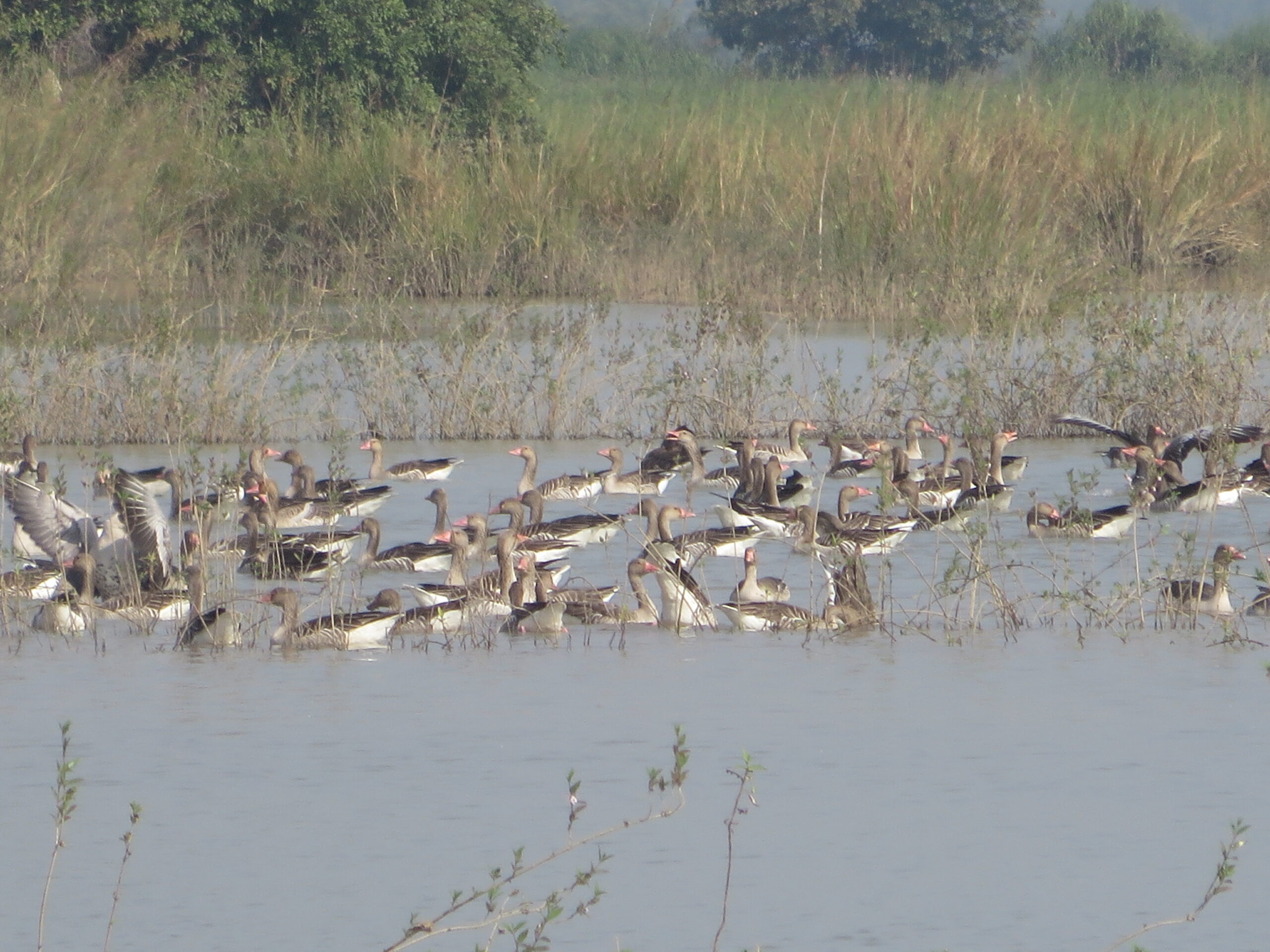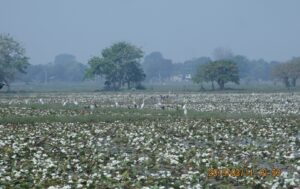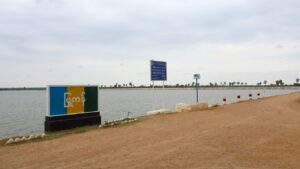|
|
|
On the 16th of November 2023, the East Asian-Australasian Partnership (EAAFP) welcomed the addition of two new Flyway Network Sites (FNS) of the Republic of the Union of Myanmar namely, Paleik Lake (EAAF154) and Pyu Lake (EAAF155), marking the seventh and eighth FNS in the country.
 Flock of Greylag Goose recorded in December 2016 at Paleik Lake FNS © Thiri Dae We Aung/BANCA
Flock of Greylag Goose recorded in December 2016 at Paleik Lake FNS © Thiri Dae We Aung/BANCA
Recognised as an Important Bird and Biodiversity Area (IBA) and a Key Biodiversity Area (KBA), Paleik Lake (EAAF154) provides food and shelter to globally threatened migratory waterbirds such as Critically Endangered Baer’s Pochard (Aythya baeri), Vulnerable Common Pochard (Aythya ferina), and other more abundant species including Greylag Goose (Anser anser), Glossy Ibis (Plegadis falcinellus), and Black-headed Ibis (Threskiornis melanocephalus), as well as a breeding ground for other waterbird species. Paleik Lake is also known to provide a variety of livelihood benefits to local communities primarily through agriculture and aquaculture by supplying water for the cultivation of rice and vegetables and as a habitat for economically important fishes and aquatic plants. Additionally, Paleik Lake plays a vital role in mitigating and adapting to climate change, specifically in preventing droughts and floods during extreme weather events.
 Diving duck species observed at the northeast part of Pyu Lake FNS in January 2019 © Thiri Dae We Aung
Diving duck species observed at the northeast part of Pyu Lake FNS in January 2019 © Thiri Dae We Aung
Home to a diverse population of aquatic flora and fauna, Pyu Lake (EAAF155) annually supports up to 40 waterbird species including the Critically Endangered Baer’s Pochard (Aythya baeri) and the Vulnerable Common Pochard (Aythya ferina). Pyu Lake is characterised by its surrounding agricultural land with abundant crops that support the livelihoods of local communities. In addition, the presence of economically significant aquatic plants and fish in the lake greatly contributes to the preservation of traditional fishing practices among the local villagers. With no prior conservation frameworks in place or national/local legal recognition as a critical habitat for migratory waterbirds and other species, Pyu Lake’s designation as an FNS is a crucial step in ensuring that further biodiversity loss is minimised, and appropriate conservation measures are implemented.
Myanmar’s Ministry of Natural Resources and Environmental Conservation established the Mandalay Region Wetlands Conservation Committee which enables the conduct of annual wintering survey and Asian Waterbird Census in both Paleik Lake and Pyu Lake, the implementation of education awareness activities focusing on migratory waterbird species, among others. Since 2016, the Biodiversity and Nature Conservation Association (BANCA) performs the annual waterbird monitoring in both sites. Moreover, the Paleik Bird Lover Association and Shwe Kan Tharyar Nature Conservation Association are local conservation groups established to conserve the biodiversity of Paleik Lake and Pyu Lake, respectively.
With the valuable support of national and local conservation groups, the designation of Paleik Lake and Pyu Lake offers a ray of hope for enhanced governance and management of wetland ecosystems in Myanmar. As part of their conservation measures, management plans for Paleik Lake and Pyu Lake are intended to be developed. Both FNS are also recommended for designation as Ramsar sites by the Ramsar Administrative Authority of the Forest Department of Myanmar.
The expansion of the Flyway Site Network exemplifies the unwavering commitment of the EAAFP and its Partners in conserving and restoring important habitats for migratory waterbirds both for nature and people. It is a truly remarkable partnership driven by our shared goals and appreciation to safeguard the connectivity of wetland habitats along the flyway, thereby providing safe havens for migratory waterbirds.


 Paleik Lake © Thiri Dae We Aung/BANCA
Paleik Lake © Thiri Dae We Aung/BANCA Pyu Lake © Thiri Sandar Zaw
Pyu Lake © Thiri Sandar Zaw


